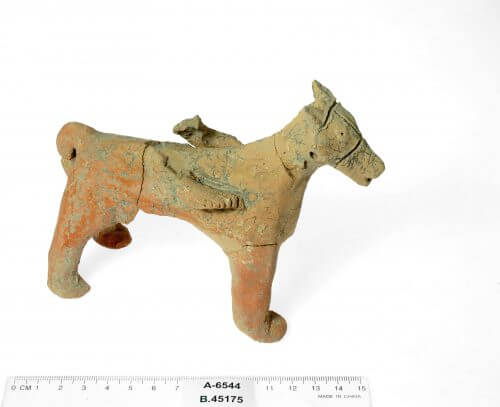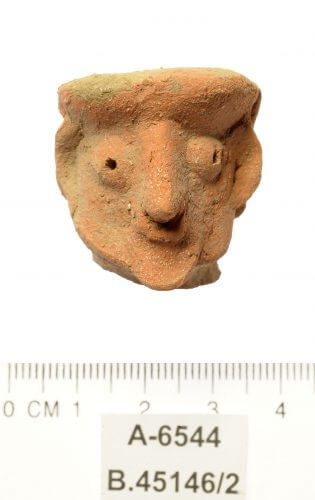The excavation may answer many questions about the Kingdom of Judah in the days of the First Temple, and about the compatibility between the archaeological findings and the biblical text * The article was recently published in the journal Biblical Archeology Review

Archaeologists from Tel Aviv University, led by Prof. Oded Lifshitz and doctoral student Shua Kisilevich, an archaeologist at the Antiquities Authority, continue to uncover a unique temple from the time of the First Temple in Tel Motza near Jerusalem. The complex of the temple, which is the only one of its kind found so far within the boundaries of the kingdoms of Israel and Judah, is similar in many details to the temple built by King Solomon, which is described in great detail in XNUMX Kings chapter XNUMX. According to the researchers, the site contributes a lot to the understanding of the First Temple period and to the comparison between the archaeological findings - here and at other sites - and what is told in the Bible.
The article was published in the journal Biblical Archeology Review.
"The excavation at Tel Moza began in 1993, as a rescue excavation by the Antiquities Authority - in preparation for the construction of a road section that will replace the Moza roundabout on Highway 1," says Kisilevich. "Additional rescue excavations were carried out in 2002, 2003 and 2012-13. These excavations revealed an important site, the dominant period represented in it is the days of the First Temple - from the 10th century to the beginning of the 6th century BC (Iron Age 2). The findings indicate that here was an important economic and administrative center of the fertile valley of origin, with dozens of silos and two large warehouses for grain storage. In the center of the site, a monumental temple complex of the 'North Syrian temple' type, whose plan is typical of the ancient Near East, was revealed. Among other things, an altar for making sacrifices, a table for placing offerings and many ritual tools were discovered at the place - among them human and horse-like clay figurines as well as a large and decorated ritual. The temple in the origin is the only temple complex of this type that has been discovered so far within the realms of the kingdoms of Judah and Israel. Its architectural plan and the decorations adorning the objects of worship are similar to those attributed to Solomon's temple in Jerusalem, and which are described in detail in the book of XNUMX Kings, chapter XNUMX."
An unprecedented find
In March 2019, after the completion of the construction of the bridge leading to Jerusalem and the removal of the sand fillings that covered the site during construction, where the archaeologists to Tel Motza - from now on as an academic excavation of Tel Aviv University. "The excavations this season were very focused, and the goal was twofold: first, to continue uncovering the structure of the temple, and second, to use advanced scientific technologies to advance the understanding of the site," says Kisilevich. "We found that the length of the structure was at least 21 meters, and we discovered that under the floor of the temple courtyard there are remains of another cult structure, probably from the 10th century BC."
The researchers point out that the complex of the temple, on its various layers, is an unprecedented find in the archeology of the Land of Israel: cult buildings erected at the beginning of the Iron Age 2, and a temple that continued to exist throughout most of the days of the First Temple, at the same time as Solomon's Temple in Jerusalem. Therefore, the site contributes a lot to understanding the development of worship in Judah, as well as to understanding the process of the formation of the Kingdom of Judah.
During the excavation, the researchers sampled materials from four layers that were exposed in a section on the eastern side of the temple, and sent them for testing using different technologies: OSL - a physical method for dating soil samples; Carbon 14 tests for dating organic materials; and techniques of microarchaeology that use microscopes, infrared rays and other scientific instruments to reveal what is hidden from view in the archaeological findings. "The results of the tests will provide us with a lot of information about the temple," Kisilevich says. "Among other things, we hope that they will help us pinpoint the dates of the various layers, find out if the building was abandoned for any period of time, and reconstruct the nature of the activities that took place in the temple courtyard. Since most of the ritual activity took place in the courtyard, while the temple building itself was accessible only to priests, we hope that further excavation in this area will reveal additional ritual objects."

"The excavation findings at Tel Motza, in the past, present and future, are of great importance for understanding the period of the First Temple, and for comparing the archaeological findings with the Bible," Prof. Lifshitz concludes. "The very existence of a temple similar to Solomon's Temple a few kilometers away from Jerusalem raises many questions, since the biblical text is full of struggles at places of worship outside of Jerusalem, and even explicitly states that the God of Israel must be worshiped only in the temple in Jerusalem. Moreover, the books of 8 Kings and 7 Chronicles tell of two religious reforms that dealt with exactly this point: the reform of King Hezekiah at the end of the 586th century BC and the more extreme reform of King Josiah, who destroyed all the places of worship outside of Jerusalem at the end of the XNUMXth century -XNUMX. We hope that our findings will help us answer a variety of intriguing questions: Who originally built the temple and when? What worship took place there at different times? What was the relationship between the community around the temple at the origin and the community around the temple in Jerusalem? Did the priests of the original temple at some point assume the supremacy of the priests and rulers of the temple in Jerusalem, and if so, when did this happen? Did the temple survive the religious reforms of Hezekiah and Josiah, and did it continue to operate until the destruction of the kingdom of Judah by the Babylonians in XNUMX BC?"
At this stage, two more excavation seasons are planned in Tel Motza, in the spring of 2020 and in the spring of 2021, with the participation of students and researchers from around the world, mainly from Israel, Germany, the Czech Republic and the USA. The researchers are sure that many exciting discoveries are still waiting for them at the unique site that never ceases to surprise.

6 תגובות
It is said that in the days of Manasseh, idols were brought into the temple and Yashyahu removed them: the Asherah and the Baal.
The war for belief in one God was long and lasted for hundreds of years.
Photographer in the hall? Unbelievable? believe and see in this context an article I published in "Hidan" regarding
... in our image and likeness..."
I don't know why but the head of the figurine reminds me of Trump (especially in the hairy area)
In the Bible it is written that temples were built...back in the time of King Solomon...for Solomon's foreign wives...such as the daughter of Pharaoh from the 21st dynasty of Egypt...or for another foreign woman...and there were temples for idolaters...and there is no connection either to the Kingdom of Israel or to the Kingdom of Judah...this is my opinion... Not for the time of the king of Israel and the so-called reform in the 7th century BC...get off the story of the religious reform...this is the biggest lie of the "new historians and archaeologists...who damage the narrative of the history of the Jewish people...like the book "Rashit Israel"...temples of foreigners have always been in the Land of Israel.. And they have nothing to do with the history of the struggles of the Jewish people...this is my assessment and my opinion...stop building contradictions and lies into the history of the Jewish people...the kingdoms of Judah and Israel were not Canaanites...otherwise where did they adopt these names...?...search and search and don't associate us with an idolater...like all kings The Kingdom of Israel...which caused a division and eventually led to its erasure...and then...to the weakness of Judah...in light of the division and the destruction of the Temple and the loss of the Jewish people's sovereignty over their land...!!!
exciting. It would have been helpful if, as in other articles on the site, a link to the original scientific article had been given here as well. Good luck and may we see decisive proofs of the superiority of the Kingdom of Israel over the Kingdom of Judah from Beit Shan to Kunitilat Ajrod.
Ami Bachar
Before spring comes……..